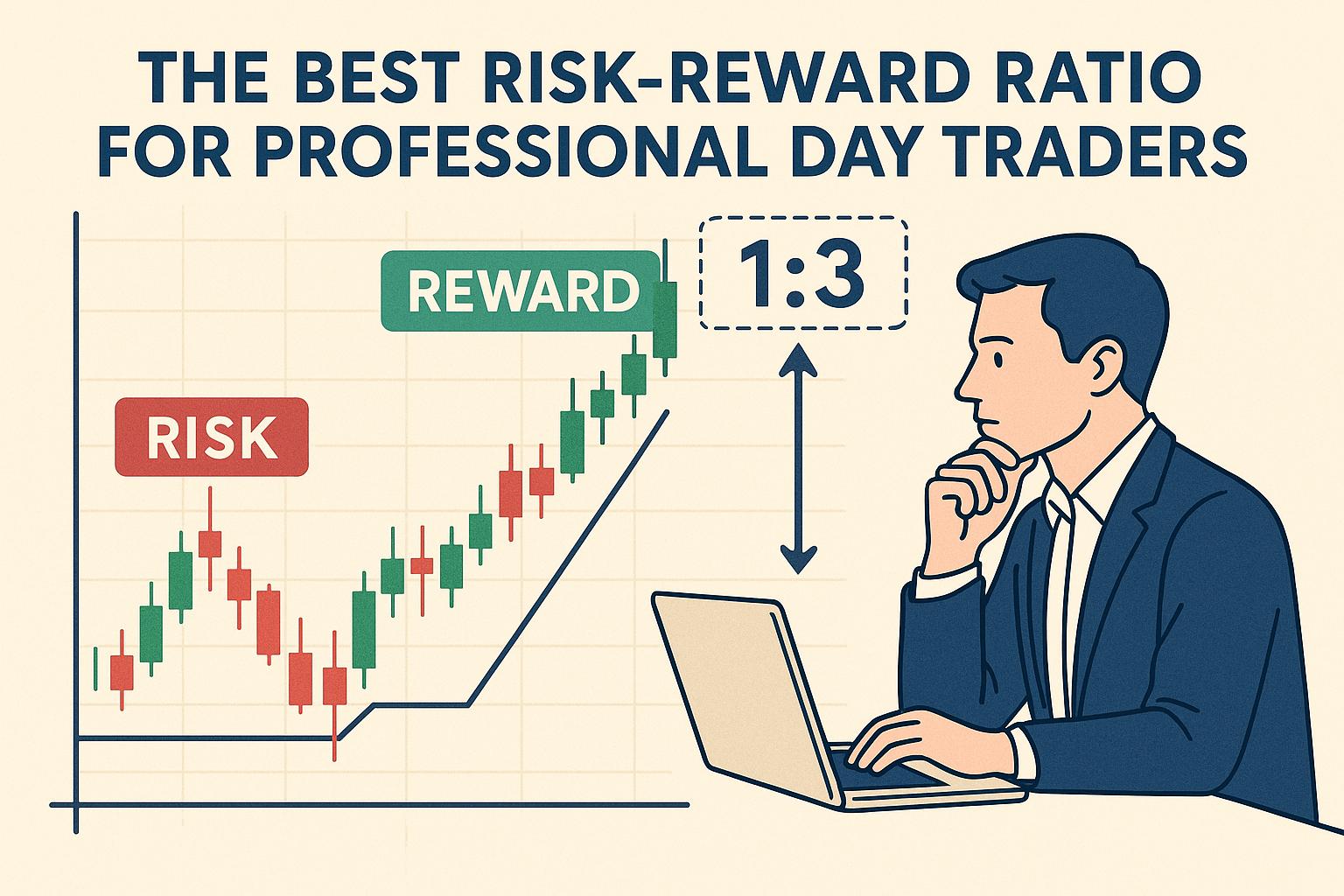Understanding Risk-Reward Ratio in Day Trading
In the domain of professional day trading, the risk-reward ratio is a critical factor that considerably impacts the decision-making process. This concept describes the potential return of an investment relative to the risk assumed in taking that investment. Essentially, it is the amount of risk one is willing to assume for a potential reward. Day traders aim for favorable risk-reward ratios to maximize their chances of success, enabling better strategic planning and execution of trades. Although there’s no single definitive answer that fits all situations, understanding this concept can significantly aid traders in strategizing their trading actions effectively.
What Is the Risk-Reward Ratio?
The risk-reward ratio is a vital calculation used by traders to compare the expected returns of an investment against the risk taken. For instance, a ratio of 1:2 indicates that a trader is willing to risk $1 in order to potentially gain $2. This parameter serves as a foundation for evaluating the profitability of a trade.
The importance of establishing a suitable risk-reward ratio cannot be overstated. A well-identified ratio provides guidance on the potential outcomes of a trade, helping traders manage their expectations and decisions in a comprehensive manner. A favorable ratio often correlates with consistent profitability, as it aids traders in making informed choices based on calculated risks and returns.
Why is it Important?
The risk-reward ratio assists traders in maintaining a necessary balance and perspective during trading. The ratio helps in decision-making by quantifying the potential risk relative to the reward, thereby allowing traders to evaluate the viability of a trade systematically. Maintaining a favorable risk-reward ratio can lead to long-term profitability. It encourages traders to be consistent and disciplined, ensuring that their trading actions are governed by rational assessments rather than impulsive choices driven by market fluctuations.
By focusing on the risk-reward ratio, traders reinforce the importance of considering both the upside and downside of a trade, allowing a more comprehensive analysis of each trading opportunity. This attention to detail enhances the trader’s ability to devise strategies that align with their financial goals and risk tolerance levels.
Determining the Best Ratio
There isn’t a universally accepted “best” risk-reward ratio applicable for all traders due to the variance in individual trading styles, risk tolerance, and market conditions. However, professional day traders often aim for a ratio of at least 1:2 or more. This means they expect to gain $2 for every $1 risked, providing a buffer that allows them to be wrong more frequently while still maintaining profitability.
Choosing the appropriate risk-reward ratio is a personal decision that requires careful assessment of one’s trading methodology and financial objectives. Traders need to consider their comfort level with risk and the nature of the market they are engaging with. A ratio that suits one trader may not be effective for another, highlighting the importance of personalized strategy development.
Benefits of a Favorable Ratio
Adopting a risk-reward ratio of 1:2 or greater can offer several notable advantages:
Reduces the Impact of Losses: With a favorable ratio, a trader doesn’t need to achieve a high win rate to be profitable. This margin allows for unsuccessful trades without significant detriment to overall performance.
Enhances Risk Management: A favorable risk-reward ratio encourages the trader to assess trades thoroughly, ensuring that only opportunities with significant upside potential are considered. This careful evaluation reduces the likelihood of entering trades that do not align with the trader’s risk-reward criteria.
Promotes Discipline: The strategy aids traders in sticking to a predetermined trading plan without succumbing to emotional reactions when the market becomes volatile. Discipline enforced by adherence to a set risk-reward ratio can mitigate impulsive decision-making that often leads to undesirable outcomes.
Moreover, maintaining a favorable ratio fosters a mentality focused on sustainable growth and risk control. Traders who prioritize a balanced approach tend to develop more robust financial habits, paving the way for long-term success in the trading arena.
Conclusion
Professional day traders understand the paramount importance of maintaining an advantageous risk-reward ratio. While a higher potential ratio can be tempting, it is crucial to remain realistic about the risks involved. Traders are encouraged to continually evaluate and adapt their strategies in light of their personal goals and the ever-changing market conditions. Achieving an optimal risk-reward ratio requires a thorough understanding of market dynamics and a willingness to adjust one’s approach to stay aligned with current realities.
To further explore risk-reward strategies, professional trading platforms can offer additional tools and insights that aid in refining trading methodologies. These resources can prove invaluable in the development of a comprehensive trading plan that accounts for both risk management and profit maximization. Through dedication and informed decision-making, traders can leverage the risk-reward ratio to their advantage, ultimately driving success in their trading endeavors.
This article was last updated on: November 6, 2025


